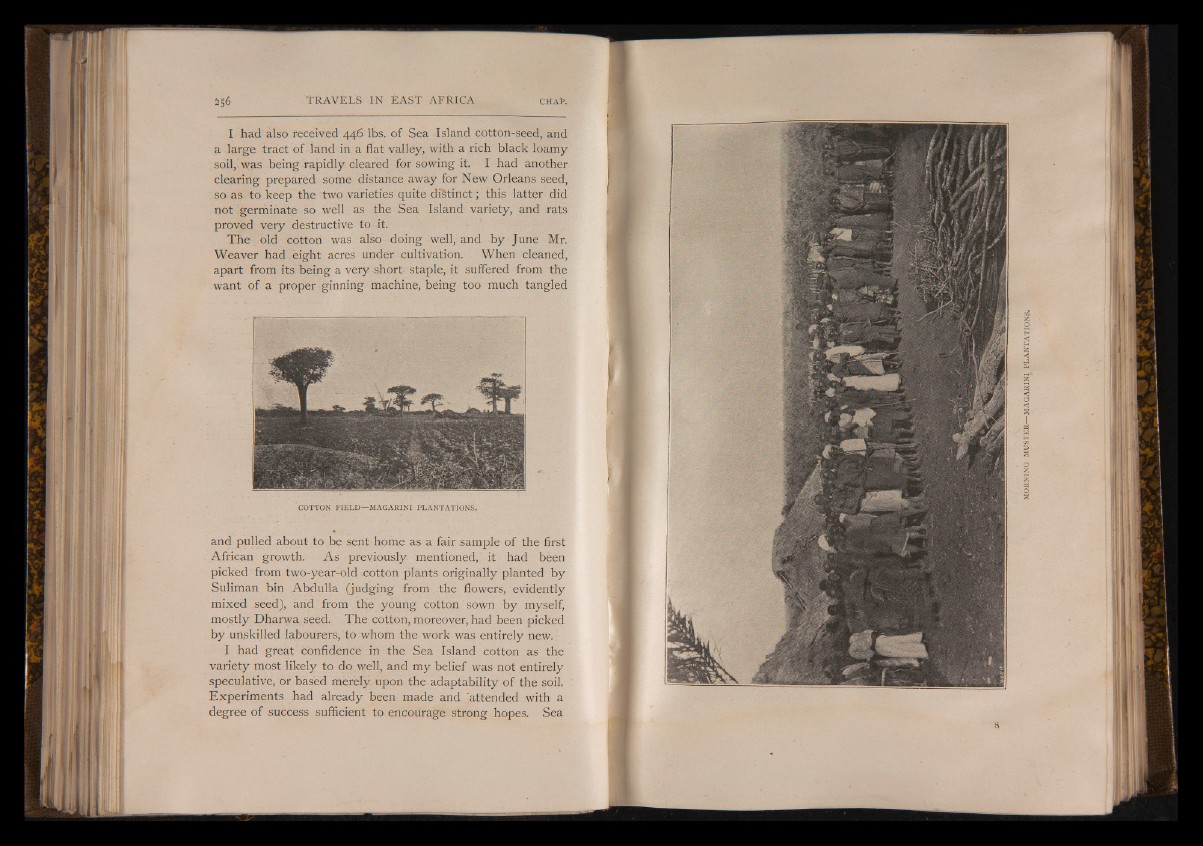
I had also received 446 lbs. of Sea Island cotton-seed, and
a large tract of land in a flat valley, with a rich black loamy
soil, was being rapidly cleared for sowing it. I had another
clearing prepared some distance away for New Orleans seed,
so as to keep the two varieties quite distinct; this latter did
not germinate so well as the Sea Island variety, and rats
proved very destructive to it.
The old cotton was also doing well, and by June Mr.
Weaver had eight acres under cultivation. When cleaned,
apart from its being a very short staple, it suffered from the
want of a proper -ginning machine, being too much tangled
COTTON FIELD— MAG AS IN ! PLANTATIONS.
and pulled about to be sent home as a fair sample of the first
African growth. As previously mentioned, it had been
picked from two-year-old cotton plants originally planted by
Suliman bin Abdulla (judging from the flowers, evidently
mixed seed), and from the young cotton sown by myself,
mostly Dharwa seed. The cotton, moreover, had been picked
by unskilled labourers, to whom the work was entirely new.
I had great confidence in the Sea Island cotton as the
variety most likely to do well, and my belief was not entirely
speculative, or based merely upon the adaptability of the soil.
Experiments had already been made and 'attended with a
degree of success sufficient to encourage strong hopes. Sea